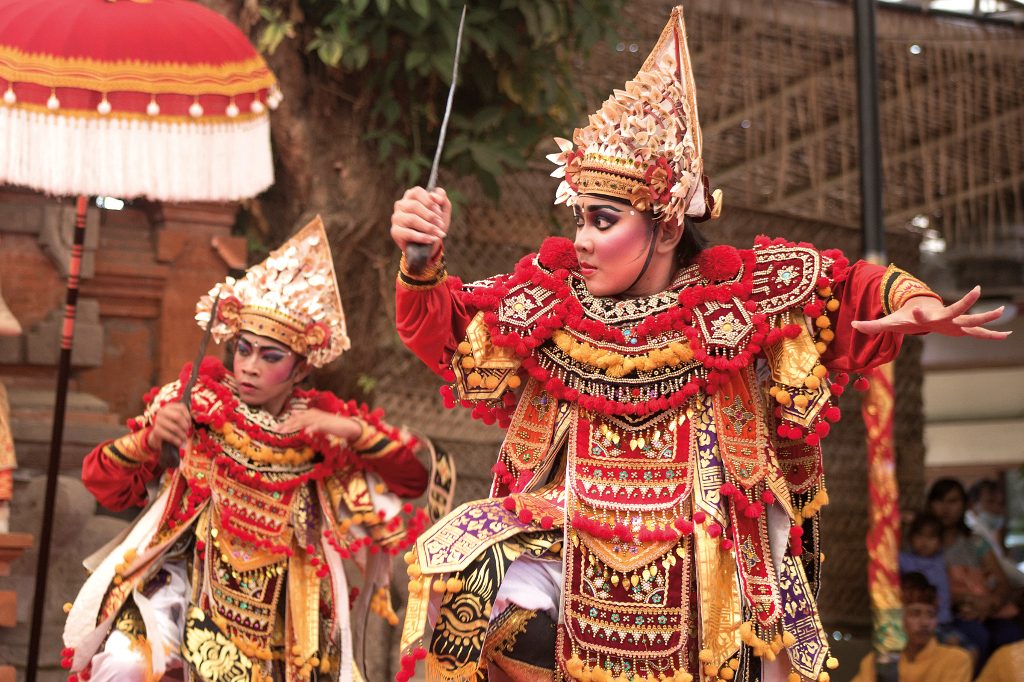Baris dance is one important dance usually performed as the opening to a sacred ritual or big religious ceremony in temples in the villages of Bali. The dance plays an important role as it symbolises the welcoming of deities, gods and goddesses that are believed have come down from heaven to witness the rituals. The role is more or less similar to the Rejang Dance.

Unlike the Rejang that showcases the graciousness performed by a group of teenage girls or married ladies, the Baris Dance tends to display strength, boldness and power. While the routine of Rejang Dance is very simple, the routines of Baris is complex. However, both dances have many varieties, they are different from village to village. Each variety has its own uniqueness, though, sometimes the routines are different. While Rejang is only performed for sacred rituals, we can still see the Baris Dance performed on the public stage, of course, with some modification from the sacred one.
There are various types of Baris Dance, one of them is Baris Keris. The first impression that will catch everyones attention is the beautiful costume. The accessories around the neck to the chest is called badong, basically a bib adorned with sparkling golden beads and tiny red and yellow pompoms. The multiple layers of the colourful rectangular pieces around the body is called lamak. These lamak are the items that give off a beautiful effect when the dancers move and rotate. The colour red, yellow, black and white are chosen as those colours represent Gods.
The Baris Keris dance is performed by a group of male dancers. They represent two different groups. Just like other variants of the Baris Dance, Baris Keris also aims to display the braveness of elite soldiers. But, in Baris Keris performances one can expect to see beautiful actions with a dagger or locally known as Keris. The rest of the routines are mostly similar with other Baris dances. The first position is called agem, it is a strong triangular pose with both shoulders lifted up and straight. This pose represents strong foundations of a soldier. The walk or know as malpal is also important to be done perfectly as it is symbolises careful, confident and a bold approach. All routines are nicely combined into one flow of movement that tells a story of brave troops and fighting their enemy in the war-zone.
Last but not least, facial expressions and the music are also the key in making the entire performance alive. The music is gong kebyar or angklung kebyar which is a complete set of Balinese traditional ensembles. The beat is dynamic and fast. Each element of the performance is awakens a positive vibes around the venue.









